




We are dedicated to providing quality products, our founder Charlie Hudson’s philosophy, “Product performance is key, it is this that people remember long after price has been forgotten”, drives our organisation.
Our working culture, engagement techniques and strong employer values have earned ‘A Great Place to Work’ recognition.
MADE IN GREAT BRITAIN
Instarmac supply the flooring market with a comprehensive range of smoothing underlayments, moisture protection products, repair and finishing compounds, and ancillaries, including a primer and adhesive.

We maintain an automated manufacturing facility specifically designed for our needs, and which utilises the latest technology ensuring consistent and reliable product production. An ISO approved process of testing in-house and through certified external bodies offers the reassurance of a quality guarantee and secures worldwide recognised product performance.

Investing in our research and development laboratory has allowed us to be innovative and continuously explore changing market demands, new emerging technologies, alternative materials and environmental impacts. Our product range evolves to meet your needs without any compromise to its quality.
We are committed to providing service time and time again which exceeds your expectations. Our team of fully trained staff are just a phone call away to provide all the technical and practical support about the products needed to complete a successful sub-floor preparation contract. We utilise the latest technology helping to ensure a seamless ordering process, including automatic order confirmations.
We pride ourselves on offering a second-to-none delivery service, paralleled with a commitment to protecting vulnerable road users. Our privately owned FORS Silver accredited fleet of 35 vehicles is managed and fully tracked in-house. Getting product to our customers’ warehouses or to site is key. By operating a fleet with employed drivers, live tracking technology, text notification software and tail lifts on all vehicles you will experience first-class service, accurate deliveries and reduced damages.
Our aim is to provide the correct quality products, efficiently without complications every time you place an order. We will always be on hand whenever you need support and are happy to conduct free bespoke training or site visits on your behalf. Marketing materials in the form of collateral and POS are readily available when required.
We continue to implement our comprehensive environmental initiatives as laid out in our ISO 14001 action plan, and often re-evaluate our position with a truly sustainable future in mind for our business and yours.
Instarmac has been manufacturing in the Midlands since 1977. We are a privately owned business offering financial stability and trading security.
Level Multi Pro
moisture tolerant
- Foot traffic in as little as 90 minutes
- Ready to receive bonded floor coverings after 4 hours
- Priming not required
- Use over most common subfloors, including old adhesive residues
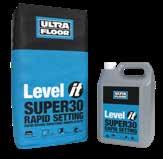


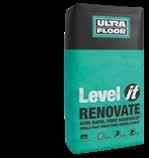

- Moisture tolerant
- UFH compatible
- Low odour
- Protein free
- Foot traffic in as little as 30 minutes
- Ready to receive unbonded floor coverings after 45 minutes and bonded coverings in 90 minutes
Protein free
Size:
& 4L
Pallet Quantity: 48 Classification: CT-C35-F7
Size: 20kg & 5L Pallet Quantity: 48 Classification: CT-C12-F3
Low odour
- Protein free
underlayment


- Specially formulated with Ecosphere technology - a unique recycled material
- Ready to receive bonded floor coverings after 4 hours
- Use over most common subfloors,
- including old adhesive residues and bitumen
- Moisture tolerant, low odour and protein free
- Designed for underfloor heating
- Extended working time of 45 minutes for optimal usability
- Advanced performance, fibre reinforced water mix, with exceptional flow and ease of application
- Foot traffic in as little as 2 hours
- Ready to receive bonded floor coverings after 12 hours
- Superior flow and extremely smooth finish

- Designed for use under sheet vinyl, LVT, linoleum and rubber floor coverings
- Pump or trowel applied
- Ideal for large flooring projects

- UFH compatible
- Low odour
- Protein free

- Can be used as a wear surface



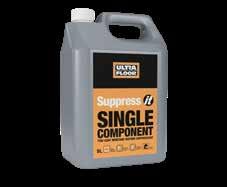








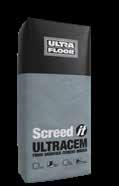

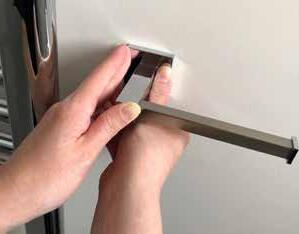



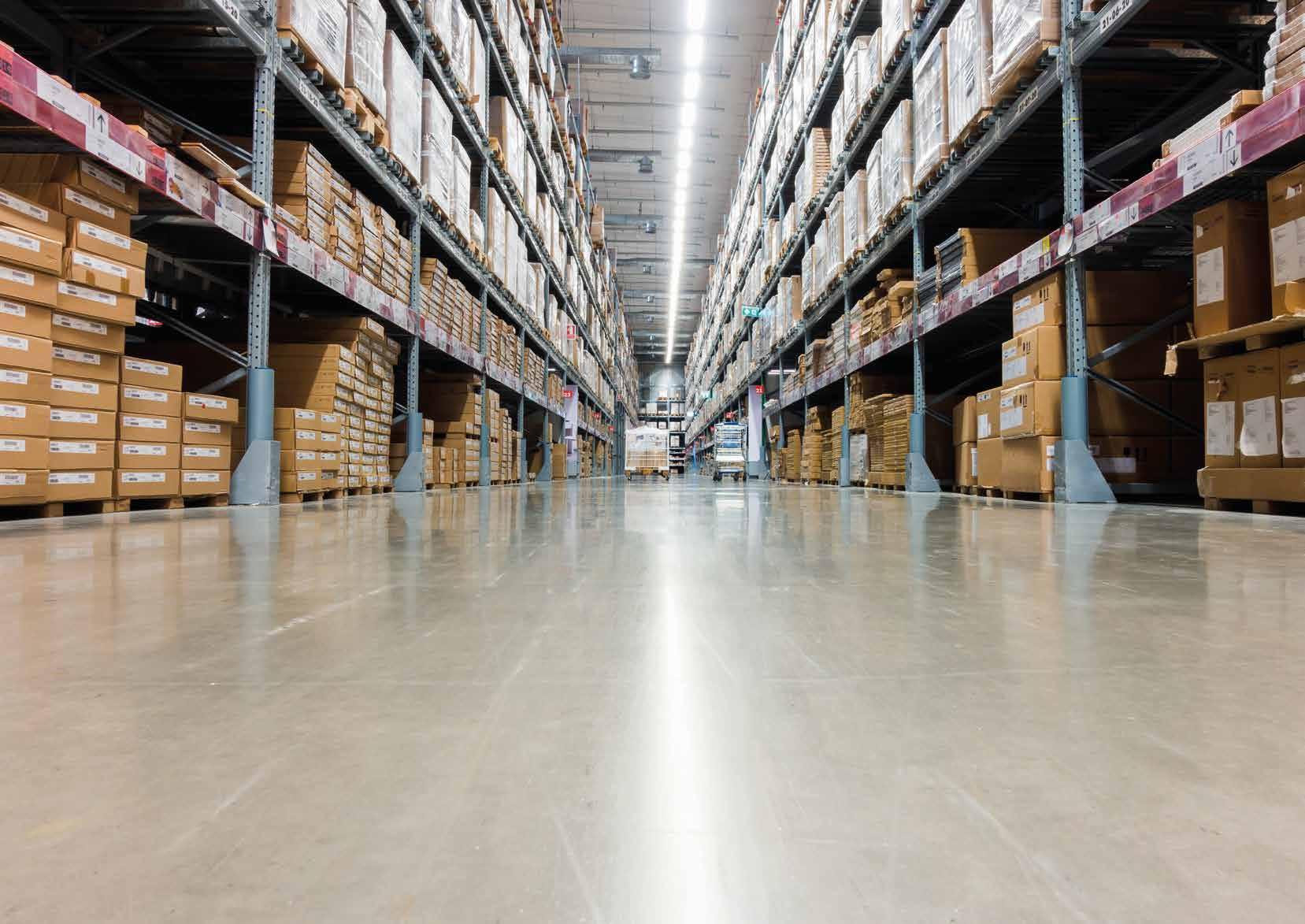
The European Standards explained:
BS EN 13318:2000
BS EN 13318:2000 states the definition of a screed as:
Layer or layers of screed material laid in situ, directly onto a base, bonded or unbonded, or onto an intermediate layer or insulating layer, to obtain one or more of the following purposes:
- to obtain a defined level;
- to carry the final flooring;
- to provide a wearing surface.
BS 8204-1:2011
BS 8204-1:2011 gives recommendations for the design and laying of concrete bases and cementitious levelling screeds to receive in situ floorings. It also gives recommendations for constituent materials, design, work on site, inspection and testing of concrete bases that are to receive in situ wearing screeds.
BS EN 13813:2002
BS EN 13813:2002 is entitled ‘Screed material and floor screeds - Screed materialProperties and requirements’.

It defines for fresh screed material the performance related to setting time, consistency, pH value and for the hardened screed material, compressive strength, flexural strength, wear resistance, surface hardness, resistance to indentation, resistance to rolling wheel, shrinkage and swelling, modulus of elasticity, bond strength, impact resistance, reaction to fire, acoustic performance, thermal resistance and chemical resistance.
Cementitious smoothing underlayments (CT) are classified on both compressive (C) and flexural (F) strength and abrasion resistance (AR*) where relevant e.g. CT C35 F6 AR0.5.
*abrasion resistance, in the UK for wear resistance use British Cement Association test

All UltraFloor smoothing underlayments, repair and finishing compounds and our damp proof membrane are fully CE classified, their ‘Declaration of Performance’ certificates can be downloaded at the click of a button from ultra-floor.co.uk or via our Product Planner App.
A textile floor covering typically consisting of an upper layer of pile attached to a backing.
The bark of a cork oak tree which is ground into sheets that are used as tiles to create a floor covering.
A multi-layer synthetic flooring which is fused together using a lamination process.


A raised surface providing an elevated structural floor above a solid substrate, creating a hidden void for the passage of mechanical and electrical services.

A hard wearing plastic surface, created by mixing together a selection of ingredients. The chemical reaction creates a highly durable finish. Resin is ideal for the heaviest of use areas.
A floor covering made from materials including solidified linseed, pine rosin, ground cork dust, wood flour and mineral fillers such as calcium carbonate. A burlap or canvas backing is most commonly used.




LVT is made of a series of layers including a photographic layer and the flooring’s primary component, PVC. The product offers a look of real wood or stone flooring.


Can be made from either natural tree rubber or from synthetic materials, including recycled vehicle tyres.
A hard wearing material such as ceramic, stone or glass available in various sizes and shapes.
Either a water or resin based decorative surface coating that offers a wear proof finish.



This floor covering is made of small blocks of timber that are usually adhered to the subfloor/ substrate using a bitumen adhesive. Parquet is often laid in a herringbone pattern.

PVC chips are formed into solid sheets of different thicknesses by heat and pressure.
Solid wood flooring planks milled from a single piece of timber.

Engineered wood is man-made/manufactured.
There is a vast array of final floor coverings available, these pages describe each of the most popular kinds.
Pumpable
A product which may be applied by using a pump machine as well as a hand trowel.
Rapid Setting
Subfloor/Substrate
The structural base of the floor (e.g. concrete). The surface to have product applied to (e.g. old adhesive residues).
Subfloor Preparation
Surface Regularity
Straight edge method described in BS8204, For Screeds, Bases in Situ Flooring, uses a 2m straight edge and maximum deviations are measured.
Abrasion Classification
Level of resistance to wear.
Anhydrite/Hemihydrate/Gypsum
These are all names for a calcium sulphate based screed (non-cement).
Bead Thickness
Diameter of the product when applied.
Compressive Strength
The maximum resistance of a material under compression before failure.
Curing Time
When a product reaches its designated strength.
Cushioned or Flexible Vinyl Tiles
Vinyl that deforms under load.
DPM & MVS
DPM stands for Damp Proof Membrane and MVS is a Moisture Vapour Suppressant.
Drying Time
The time taken for the product to lose sufficient moisture so it can be overlaid.
External Use
The product is suitable for use outside and is resistant to frost and unaffected by rain.
Fast-track
A product with quick drying and setting properties for early application of floor coverings.
Feather Edge
A fine edge achieved by tapering.
Fibre Reinforced
A product which has added fibres to its formulation, providing greater strength.
Finishing Compound
A fine product providing a finished surface.
Flexible Floor
A floor that will flex/move when loaded.
Flexural Strength
The amount of stress and force a product can withstand whilst resisting failure from bending.
Floating Floor
A floor that is not bonded to the surface below it.
Floor Coverings
A permanent covering such as carpet or vinyl providing a suitable, decorative final floor.
Floor Grade Asphalt
The product comprises suitably graded limestone aggregates bound together with an asphaltic cement (primarily refined bitumens) to produce a dense, void-less material.
Floor Sealer
Liquid coating applied to a cementitious wear surface to protect from spillages and other absorbent oils and liquid contaminates.
Flow Test
A test taken to measure the fluidity of a product.
Foot Traffic
When a product has cured enough to be walked on without being compromised.
Forklift Traffic
When a product has cured enough to take the weight of a forklift truck without being compromised. This only applies to products suitable for use as a wear surface.
Green Screed
A screed that is still within its curing and drying times.
Laitance
Fines collected on the surface of the subfloor/ substrate during the drying/curing phase.
Industrial Use
Products capable of being heavily trafficked.
Internal Floors
Surfaces that are sheltered from external elements.
Levelling Compound
A levelling compound is usually applied by hand or pump at a thickness of at least 5mm. It provides a defined level surface, either as a final wear surface or for final floor finishes to be applied to.
Linear Metre
Is a measurement from point A to point B which equals 100cm.
Low Odour
The smell of the product is contained to avoid transfer.
Mezzanine Decks
A mezzanine is an intermediate floor (or floors) in a building which is open to the floor below.
Moisture Tolerant
A product suitable for use under a DPM.
Movement Joints
Essential design features which are gaps within a floor design that are filled with a flexible material.
Non-porous/Non-absorbent
Refers to a surface which does not allow liquid, air or moisture to pass through it such as flooring grade asphalt and ceramic tiles.
Old ‘Crunchy’ Tiles
Old vinyl tiles that have been manufactured with asbestos.
Open Time
The time from application to subfloor/ substrate when the product is still useable.
Porous/Absorbent
Refers to a surface which does allow liquid, air or moisture to pass through it such as concrete and plywood.
Pot Life
The length of time after mixing a product that it is still useable.
Power Floated Concrete
A dense and smooth concrete subfloor/ substrate that has crack-resistant properties.
Primer
A substance used to seal a surface to prevent absorption from subsequent layers and aid adhesion.
Protein Free
A product formulation free of any protein raw materials making it ideal for use in biological sensitive areas.
A product modified so it sets quickly, by utilising different cements and technologies.
Relative Humidity (RH)
The amount of water vapour present. A substrate below 75%RH is considered dry.
Repair Mortar
A product which is designed for repairing small cracks.
Resin Floor Finishes
Are produced by a chemical reaction between polymers which are absorbed into and create a chemical bond with the substrate they are installed on.
Scratch Coat
A thin layer applied to the subfloor/substrate prior to main application.
Screed
Usually a screed is the subfloor/substrate, however some people refer to smoothing underlayments as screeds.
Setting Time/Set Time
The time taken from mixing for the product to set hard.
Shear Strength
A material’s ability to resist forces that can cause the internal structure to slide against itself.
Skin Formation
The length of time after which the product will begin to dry out forming an all over skin.
Smoothing Compound
A product applied by hand at only a few millimetres depth, providing a smooth surface for the application of final floor coverings.
Smoothing Finishing Compound
A cementitious smoothing underlayment used to smooth over a surface or used as a wear surface.
Smoothing Underlayment
A cementitious leveller used to smooth over a surface prior to application of the final finish.
Straight Edge
A bar with one accurately straight edge, used for testing whether something else is straight.
Any treatment prior to final decorative floor covering installation, including applying a DPM, priming, levelling or repair work.
SURFACE PREPARATION TECHNIQUES
Shotblaster - Profiling and cleaning with a shotblaster, is created by shot (steel abrasive) which is propelled at high velocity onto the background surface and the dust/debris contained in dedicated dust extractors. The shotblasting process is ideal for removing concrete laitance and coatings and surface contaminants on concrete, asphalt and stone surfaces. Shotblasters are also proven to prepare steel to SA2 ½ standard.
Single Head Grinders - Single head grinders grind and smooth. A singular Diamond Disc rotates within the body of the machine. Designed for use with Dust Extraction, Grinders remove concrete laitance, coatings, adhesives and smoothing underlayments.
Multi-head Grinders & Polishers - Multihead Grinders have interconnecting arms fitted with diamond accessories that rotate within the body of the machine to uniformly grind and polish the surface.
STGs - Sanding discs and cleaning pads are placed under the Surface Texture Grinder drive plate and rotate to clean, sand, smooth and polish. Alternatively, heavy duty Diamond and PCD Drive plates can be fitted to the base of the machine to grind and smooth or remove coatings, bitumen and adhesives.
Planers - Drums on a planer are fitted with frails that rotate, cutting and grooving the background surface. Designed for use with dust extraction, Planers efficiently groove and reduce concrete and remove thermoplastic lines, roof chippings, screeds and smoothing underlayments.
Multi-strippers - Blades or picks fitted to the front of the machine, cut and lift the material to be removed. Multi-strippers are designed to remove vinyl, carpet, wood/laminate, rubber, smoothing underlayments and adhesives, with large models also efficiently removing ceramic and terrazzo tiles.
Dust Extractors - Feature high performance filters for efficient collection of high volumes of dust. ‘H’ filters are available for asbestos and toxic dust collection and containment in bins or longopac bags. Some models are dual purpose collecting dust and liquids.
Tensile Strength
The resistance of a material to breaking under tension.
Thickness/Application Thickness/Depth
The level at which a product can be used from and to.
Two Part/Two Component
A product designed to have two parts which must be mixed together as instructed before use, the addition of water is not necessary.
UFH/Underfloor Heating
There are two basic types of underfloor heating:
1. Warm water pipe systems either (a) encased within the floor screed or (b) fixed within pre-formed panels (lightweight)
2. Electrical cable mats applied above the screed surface (often on backer boards and insulating systems)
Wear Surface/Surface Finish
A product designed to be used as the final exposed floor surface (non-floor covering) and is able to take either foot or vehicle traffic as stated.
Wet Edge
When applying a smoothing underlayment the leading edge must always remain wet between pours.
Working Time
The time a product has a consistency that is useable e.g. flow from initial mixing until the flow is no longer suitable for levelling.
A great deal of terminology is used within the flooring industry. This is a collection of those terms used the most by UltraFloor.
The UltraFloor range of products are suitable for use on all subfloor/substrate types. These fall into two categories, porous and non-porous, the most common include:
POROUS
Concrete
Sand:Cement
Flooring Grade Plywood
Anhydrite
NON-POROUS
Epoxy Resin Damp Proof Membrane

Power Floated Concrete
Flooring Grade Asphalt
Porcelain, Ceramic, Quarry or Terrazzo Tiled Floors


Steel Mezzanine Decks
Access Panels
It is important to establish the type of floor you are laying onto so it can be prepared in the correct way. If you do not know then ask the question.
The suitability of a subfloor/substrate should always be fully assessed before carrying out any preparation or installing a floor covering. British Standard 8204 should be referred to for full guidance and clarification.
The main criteria to be assessed is:
1. Sound/Solid - is the subfloor/substrate strong and stable?
2. Dry - has the subfloor/substrate dried/cured completely?
3. Free from Contamination - is the subfloor/substrate clean?
4. Laitance Free - is the subfloor/substrate surface free of fines?
If the answer to any of these is ‘no’, then the subfloor/substrate is not suitable to be laid onto and further preparation is required.
Testing the moisture of a subfloor/substrate can be relatively straightforward, providing you know what you are assessing and have the appropriate equipment. British Standards are in place and subfloors/substrates should be tested in accordance with the British Codes of Practice BS 8203, BS 5325 and BS 8201. A BS hygrometer box should be used. This will provide a Relative Humidity (RH) reading. A reading above 75%RH is higher than is recommended to lay floors without a surface DPM.

If a moisture reading taken is greater than 75%RH then the subfloor/substrate is considered wet (when laying textile/resilient floor coverings, 65%RH for wood). Provided the subfloor/ substrate is suitable to receive moisture protection products either a DPM or a MVS can be used. If using either UltraFloor DPM IT or UltraFloor Suppress IT, follow the product’s respective usage instructions as detailed on the datasheet.
OF COMPLAINTS ARE AS A RESULT OF MOISTURE
Source: FITA
If a subfloor/substrate has not reached the required level of dryness before a floor covering is laid then residual moisture held between the aggregate and cement (or other binder) will slowly be released, reaching the subfloor/substrate preparation and the floor covering causing damage from beneath.
Only as a two coat application, UltraFloor DPM IT may be used on subfloors/substrates where there is an absence of a constructional base DPM provided there is no hydrostatic pressure. UltraFloor DPM IT should not be used in projects where hydrostatic pressure is a concern. In such cases the use of pressure relief drainage and/or external tanking systems must be the primary method of protection against moisture.
Following British Standard 8204 all subfloors/substrates must be free from contaminants that may prevent adhesion such as dust, oils, grease, surface laitance, water soluble adhesive residues and weak smoothing underlayments etc.
Various methods and machines exist which are designed for the preparation, removal and finishing of subfloors/substrates prior to the application of any UltraFloor product. They include STGs, Shotblasters, Planers, Grinders, Multi-strippers and Dust Extractors.
We recommend that you contact The Preparation Group for advice on the appropriate method/s for your job and for equipment hire www.thepreparationgroup.com.
Smooth dense surfaces can be roughened by mechanical scabbling to enhance the key.
Priming
Why should you prime?
Priming of subfloors/substrates is key to ensuring the selected smoothing underlayment can perform to its optimum. It improves the flow and workability of the smoothing underlayment. There are three basic reasons why priming is important.
Firstly, priming reduces the absorbency of the floor; secondly it increases adhesion and finally, correct priming acts as an interface between materials preventing failure by reaction. The simple process of using the appropriate primer will minimise issues and result in:

Smoother Underlayment Stronger Underlayment Reduced Labour Time A surface fit to lay the thinnest of decorative floor coverings to
 Moisture Testing
Moisture testing equipment
Primer application
Smoothing Underlayment
Moisture Testing
Moisture testing equipment
Primer application
Smoothing Underlayment
Various underfloor heating manufacturers exist including Warmup who offer a range of systems across the different types, including Sticky Mat and Total-16. We recommend that you always refer to the manufacturer’s instructions when installing underfloor heating. It is becoming increasingly common to come across floors with underfloor heating systems incorporated. It is important to note the following points and check the underfloor heating before you begin work.
Where warm water underfloor heating systems are incorporated, they must have been fully commissioned and brought up to their maximum temperature, and ideally switched off 48 hours before the application of UltraFloor products.

In all cases our smoothing underlayments must be applied at a minimum thickness of 5mm above the cables for resilient, textile and timber applications and a minimum of 3mm for applications of stone, ceramic or porcelain products.
Warm water systems fixed within pre-formed insulation panels must be mechanically fixed to the existing subfloor/substrate these must be sound and solid with no movement.

The panels should be primed depending on the porosity and type. In all cases our smoothing underlayments must be applied at a minimum thickness of 5mm above the cables for resilient, textile and timber applications and a minimum of 3mm for applications of stone, ceramic or porcelain products.
There is no requirement to commission warm water systems fixed within pre-formed insulation panels or radiant electrical underfloor heating systems before the application of UltraFloor products. These systems should be commissioned 7 days after the UltraFloor products have been applied.

Where there is an absence of a damp proof course and provided there is no risk of hydrostatic pressure, pre-smoothing can be carried out. UltraFloor Level IT Two, UltraFloor Level IT Bond, UltraFloor Level IT Top and UltraFloor Level IT Base are all suitable for pre-smoothing use, please refer to their respective datasheets for further guidance.
When installing a wear surface ensure that the subfloor/substrates has been tested for moisture, any contamination or laitance has been removed, prime if required and check for underfloor heating. Both UltraFloor Level IT Top and UltraFloor Level IT Super Flex 30 may be used as a finished wear surface. Please refer to their respective datasheets for further guidance.
In the absence of other heat sources, the underfloor heating may be set to ‘cutback’ position to achieve an air temperature of 15°C. Any expansion or movement joints must be carried through to the finished floor surface.
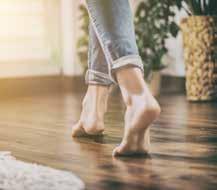

15°C
The cables of radiant electrical underfloor heating systems must be secured to a sound, strong mechanically fixed cement faced backer board. UltraFloor products may also be used where electrical underfloor heating is used over cementitious or calcium sulphate subfloors.


To commission these systems the heating should be increased 5°C per day from ambient until the maximum operating temperature has been reached, and then decreased back down again by 5°C per day.
The Instarmac CPD - Specifying Tiling to Underfloor Heating Systems - will provide you with an understanding of the benefits of heated tiles and the types of system available. It will also cover key design and specification considerations and product choices for tiling to underfloor heating and selecting appropriate materials.
It will teach you how to confidently specify typical tiling system build-ups for underfloor heating, and you should also understand the importance of warranties and confidence in complete performance systems.
Please visit ultratilefix.co.uk or call 01827 254402 for more information.

It is important to establish that the commissioning of the system has been carried out, consult the underfloor heating manufacturer for confirmation.
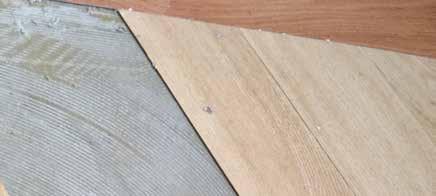
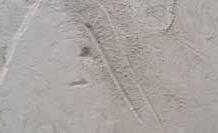

Assess your subfloor/substrate following the Preparation Guidance section of this guidehave you tested for moisture? Is the floor sound? Has all contamination and laitance been removed? Is underfloor heating used?
Prime the subfloor/substrate using UltraFloor Prime IT Multi-surface Primer diluted.
Note: The sand:cement/concrete must be strong enough to receive the smoothing underlayment selected.
Assess your subfloor/substrate following the Preparation Guidance section of this guide - have you tested for moisture? Is the floor sound? Has all contamination and laitance been removed? Is underfloor heating used?

Using a hygrometer, a moisture reading of less than 75%RH for textile/resilient floor coverings and less than 65%RH for wood must be achieved. The use of damp proof membranes or moisture vapour suppressants are not recommended.
Assess your subfloor/substrate following the Preparation Guidance section of this guidehave you tested for moisture? Is the floor sound? Has all contamination and laitance been removed? Is underfloor heating used?
Selected UltraFloor smoothing underlayments are suitable for use over most intact cementitious compounds.

The surface must be strong enough for an application of the selected smoothing underlayment. Any weak, friable or damaged material should be uplifted and repaired.
The mechanical process, multi-stripping is an ideal method used to remove old smoothing underlayments. Old adhesive residues should be removed and then the subfloor/substrate treated as absorbent, being primed using UltraFloor Prime IT Multi-surface Primer diluted. When UltraFloor Level IT Bond is selected for use, priming is not required for the purpose of adhesion.
Existing asphalt should be sound, contamination free and assessed for cracks.
The asphalt must be flooring grade BS 8204. New asphalt must be left for a minimum of 7 days and degreased to remove surface bloom. Existing asphalt should be sound, contamination free, and assessed for cracks. If cracks are present they need to be repaired to give a continuous strong subfloor/substrate.
Assess your subfloor/substrate following the Preparation Guidance section of this guidehave you tested for moisture? Is the floor sound? Has all contamination and laitance been removed? Is underfloor heating used?
Power floated concrete should be mechanically abraded (by shot blasting or scarifying) to remove surface hardeners and expose the cement/aggregate.

Prime the subfloor/substrate using UltraFloor Prime IT Multi-surface Primer neat.
Note: Primer must be left to dry thoroughly.
The subfloor/substrate should be mechanically prepared removing any laitance using a grinder followed by vacuuming to remove the dust. It is always advisable to seek the screed manufacturer’s instructions on how best to prepare the surface.

These type of screeds often incorporate warm water underfloor heating systems, check that the system has been fully commissioned, see relevant manufacturers’ technical datasheet.
Prime the subfloor/substrate using UltraFloor Prime IT Multi-surface Primer diluted and applied in two coats. See relevant datasheet for complete instructions.
Old
Assess your subfloor/substrate following the Preparation Guidance section of this guidehave you tested for moisture? Is the floor sound? Has all contamination and laitance been removed? Is underfloor heating used?

We recommend the use of popular smoothing underlayment, UltraFloor Level IT Bond, over old adhesive residues, see relevant product datasheet. As long as residues are hard, stable, firmly bonded and they are not water soluble then UltraFloor Level IT Bond can be used without priming. If any other UltraFloor smoothing underlayment has been selected then all adhesive residues should be mechanically removed.
The use of epoxy resins bulked out with sand is normally sufficient. We recommend priming prior to the application of the smoothing underlayment with UltraFloor Prime IT Multi-surface Primer neat.
Various subfloor/substrate type guides are detailed on this spread. Should any others be encountered, please contact the UltraFloor Technical Department.A newly laid dry screed which should be vacuumed before subfloor preparation Failed smoothing underlayment which was applied to a wet anhydrite floor Cracked existing smoothing underlayment which should be removed An anhydrite floor with laitance to be removed A floor showing the before and after affects of shot blasting

Unlike sand:cement and concrete, which are inherently strong and stable without any vibration or movement, there are different considerations to be made with timber/wooden subfloors/substrates. Existing timber/wooden floors must be clean, strong, rigid, level, stable and capable of withstanding the floor load. They should be sufficiently supported to prevent flexing.
UltraFloor products are suitable for use over many plywood subfloors/substrates provided the plywood is mechanically fixed and of suitable thickness. Normally plywood that has been in-situ for many years will be stable and suitable for application. Newly installed flooring grade plywood (e.g. SP101) must be mechanically fixed to a sound strong base. Timber/wood is prone to movement under varying levels of humidity so adequate ventilation beneath is necessary.
Identify if plywood is porous or non-porous prior to priming. Good quality plywood as a subfloor/substrate for floors is acceptable, providing it is properly braced to be rigid and non-deflecting, and it is not used in wet areas. BS5385-3:2014 states “Timber is not a suitable base for floor tiling in wet, frequently damp, or high humidity areas, unless appropriate precautions are taken.” The Tile Association guide recommends the use of tile backer boards in these situations.
We recommend priming non-porous wood using UltraFloor Prime IT Multi-surface Primer neat and porous must be primed with a diluted solution.
Tiled
It is possible to overlay onto ceramic, terrazzo or quarry tiles, all other types of tile should be fully removed before installing any new flooring. The mechanical process, Multistripping is an ideal method used to remove old floor tiles.

The subfloor/substrate should be assessed to ensure that all tiles are fully bonded and sound. A mechanical abrasion (either shotblasting or grinding) of the tiles is recommended and will clean and prepare the surface, whilst also helping to enhance adhesion. All tiles should be degreased and allowed to dry before proceeding. We recommend priming the tiles using UltraFloor Prime IT Multi-surface Primer neat.
All steel flooring including mezzanine decks should be structurally sound and fully supported. Mechanically abrade using a suitable mechanical machine (STG or shot blast) or a wire brush to give an abraded, corrosion free surface. Remove all excess traces of loose metal.
We recommend priming using UltraFloor Prime IT Multi-surface Primer neat when using smoothing underlayments direct to this subfloor/substrate. However, UltraFloor Level IT Bond can be used direct without a primer if the floor spec/design allows for a softer compound.
Please contact the UltraFloor Technical Department on 01827 254402.
Not all vinyl flooring is suitable to be covered over. Cushioned or flexible vinyl tiles should not be overlaid and must be removed along with the adhesive residue. The mechanical process, Multi-stripping is an ideal method used to remove old floor coverings. Hard vinyl tiles should be lightly abraded and then primed with UltraFloor Prime IT Multisurface Primer neat.
Note: Old ‘crunchy’ tiles should not be abraded as they may have been manufactured using asbestos fibres. Such tiles are typically 225mm (9 inches) square tiles and are often bonded onto a black adhesive.
Our portfolio of contract flooring solutions have been used widely across industry sectors including Retail, Health, Education and Hospitality & Leisure.


 We recommend priming wood
Tiles that are fully bonded and sound may be overlaid
We recommend priming wood
Tiles that are fully bonded and sound may be overlaid
Extreme site conditions can affect this process i.e. below 5°C and above 30°C.
Ideal ambient air and floor temperatures for application are between 10°C and 22°C.
These temperatures should be maintained throughout application and curing periods.
Outside of these temperatures consideration should be given to the following guidelines for good practice. Floor temperatures will be slower to respond to ambient air temperature so should be considered in advance.
High humidity and low temperature prolongs evaporation of moisture from the freshly applied smoothing underlayment and therefore extends drying times. This may ultimately delay installation of floor coverings. In such conditions planned heating (not gas heating) may be required before, during and after application of the product in order to promote ideal site conditions.

HEAT SHOULD BE DIRECTED INTO THE AIR not direct to the floor creating hot spots.
Good ventilation without direct drafts will also assist removal of moisture in the air from the building.
Failure to adopt such practices in such adverse site conditions may result in damp patches, slow drying and potential surface bleed within the curing smoothing underlayment.
Low humidity and high temperature conditions will speed up drying by fast removal of moisture from freshly applied smoothing underlayment.
Such conditions may cause rapid loss of moisture, required for the curing process, leading to irregular structure and strength build up. Such tensions within the drying smoothing underlayment could leave hairline surface defects. Under such conditions, smoothing underlayments should be protected from direct sunlight and drafts across its surface.
Good air flow within the build without causing drafts is essential to reduce high temperature build up.
The drying characteristics of cementitious smoothing underlayments are directly influenced by ambient air and floor temperatures. Cement within the smoothing underlayment cures through a process of hydration using moisture.